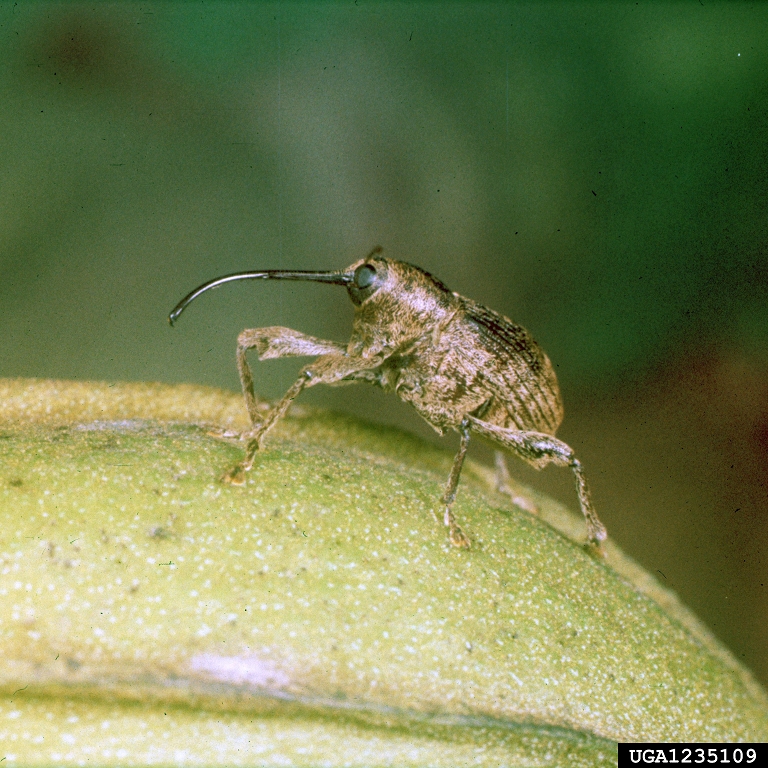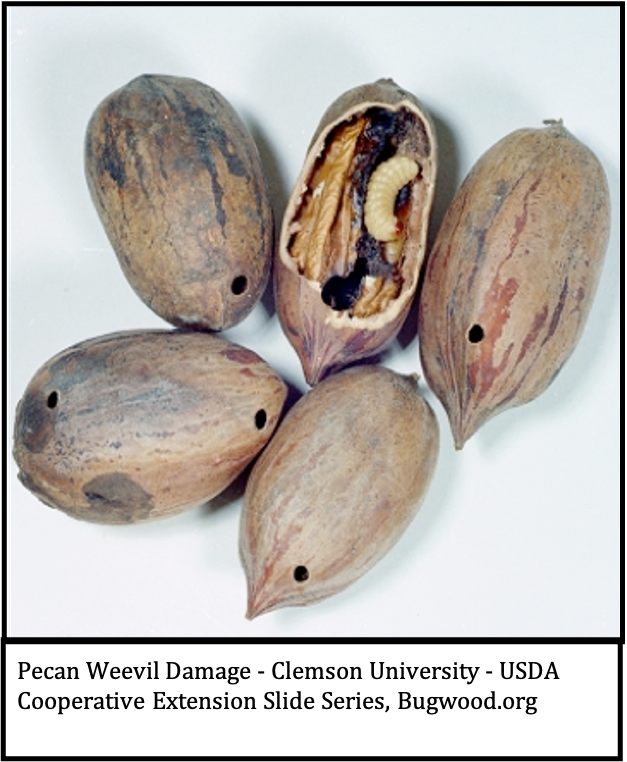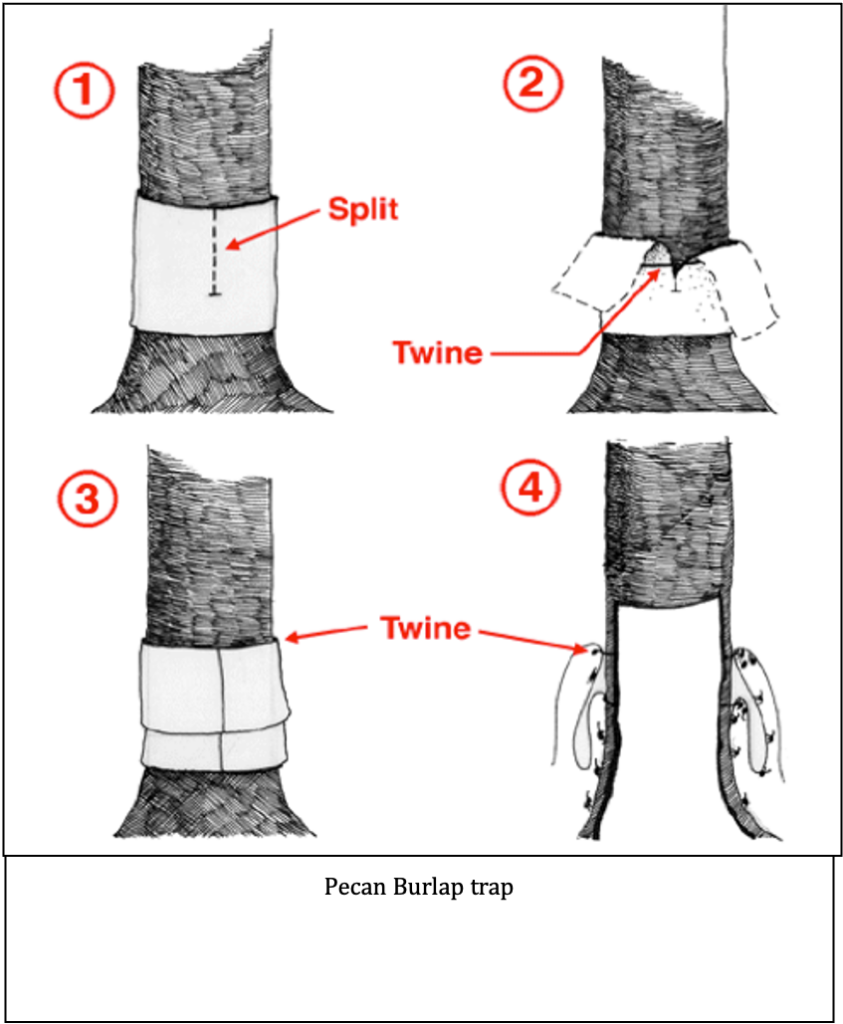Time to Manage Pecan Weevils
go.ncsu.edu/readext?1093034
en Español / em Português
El inglés es el idioma de control de esta página. En la medida en que haya algún conflicto entre la traducción al inglés y la traducción, el inglés prevalece.
Al hacer clic en el enlace de traducción se activa un servicio de traducción gratuito para convertir la página al español. Al igual que con cualquier traducción por Internet, la conversión no es sensible al contexto y puede que no traduzca el texto en su significado original. NC State Extension no garantiza la exactitud del texto traducido. Por favor, tenga en cuenta que algunas aplicaciones y/o servicios pueden no funcionar como se espera cuando se traducen.
Português
Inglês é o idioma de controle desta página. Na medida que haja algum conflito entre o texto original em Inglês e a tradução, o Inglês prevalece.
Ao clicar no link de tradução, um serviço gratuito de tradução será ativado para converter a página para o Português. Como em qualquer tradução pela internet, a conversão não é sensivel ao contexto e pode não ocorrer a tradução para o significado orginal. O serviço de Extensão da Carolina do Norte (NC State Extension) não garante a exatidão do texto traduzido. Por favor, observe que algumas funções ou serviços podem não funcionar como esperado após a tradução.
English
English is the controlling language of this page. To the extent there is any conflict between the English text and the translation, English controls.
Clicking on the translation link activates a free translation service to convert the page to Spanish. As with any Internet translation, the conversion is not context-sensitive and may not translate the text to its original meaning. NC State Extension does not guarantee the accuracy of the translated text. Please note that some applications and/or services may not function as expected when translated.
Collapse ▲(Taken from an article written by Jessica Strickland, Extension Agent Wayne County, NC)
Time to Manage Pecan Weevils
August through September is the time of year to manage pecan weevils as they begin to emerge from the ground and into pecan trees. Large infestations of pecan weevils can cause significant losses of pecans, and homeowners should be aware of their identification and activity.
Identifying Pecan Weevil Damage
The pecan weevil causes two types of damage.
Adult Pecan Weevil Damage
The first type is when the adult weevils puncture the nuts in early August, resulting in premature drop and unfilled pecans. The adult pecan weevils are grey/reddish-brown beetles with long slender snouts and thin legs.

Adult weevils have long snouts and reddish-brown bodies and begin emerging from soil in August through September.
Larval Pecan Weevil Damage
The second type of damage is caused by larval feeding within the nut. Adult female weevils will lay eggs inside pecans, with the resulting larva feeding on the nut inside. Larvae will then chew a circular hole through the shell, exiting the nut, and burrowing into the soil to pupate until next year. Larvae can be distinguished as creamy white, legless grubs with reddish-brown heads.
Monitoring Pecan Weevil Activity
Weevils typically emerge from the soil during a two-month period from August through September, so monitoring for emergence can help with control. A simple way to monitor is by inspecting nuts that have dropped to the ground and looking for dark spots that resulted from feeding through the husk. Weevil feeding may also cause the shell to stick tightly to nuts creating difficulties at harvest.
Control Methods for Pecan Weevils
If you decide to use insecticide to control the pecan weevils, applications should be made every 7 to 10 days (depending on product label recommendations) from mid-August through mid-September using a carbaryl (Sevin) insecticide.
Chemical Control with Insecticides
In commercial orchards where control is important, specialized equipment such as air blast sprayers and aerial applications may be used. For homeowners, this equipment far exceeds reasonable expense and most homeowners cannot reach into the canopy to make an effective insecticide application.
Sanitation and Cultural Practices
An alternative control method is to gather and destroy weevil-infested nuts as soon as they fall to prevent the larvae from entering the ground and hanging around until the next growing season. After several seasons of such sanitation practices, you can reduce the potential population of weevils around your trees. However, since pecan weevils can fly, no control method can completely eliminate weevils from the environment.
Trapping Adult Pecan Weevils
To monitor and trap active adults, you can wrap burlap around the trunk of trees creating a fold of material. As insects crawl up the trunk they will be slowed by this fold and can be removed. The addition of tanglefoot gel to this burlap may also trap a few more insects, but will also trap more debris and other small insects. Do keep in mind that many pecan weevils can fly into trees, so traps have limited effect.
Additional Resources
If you would like more information on pecan weevils and their control you can contact Daniel Simpson at (252) 745-4121 or Daniel_simpson@ncsu.edu.





